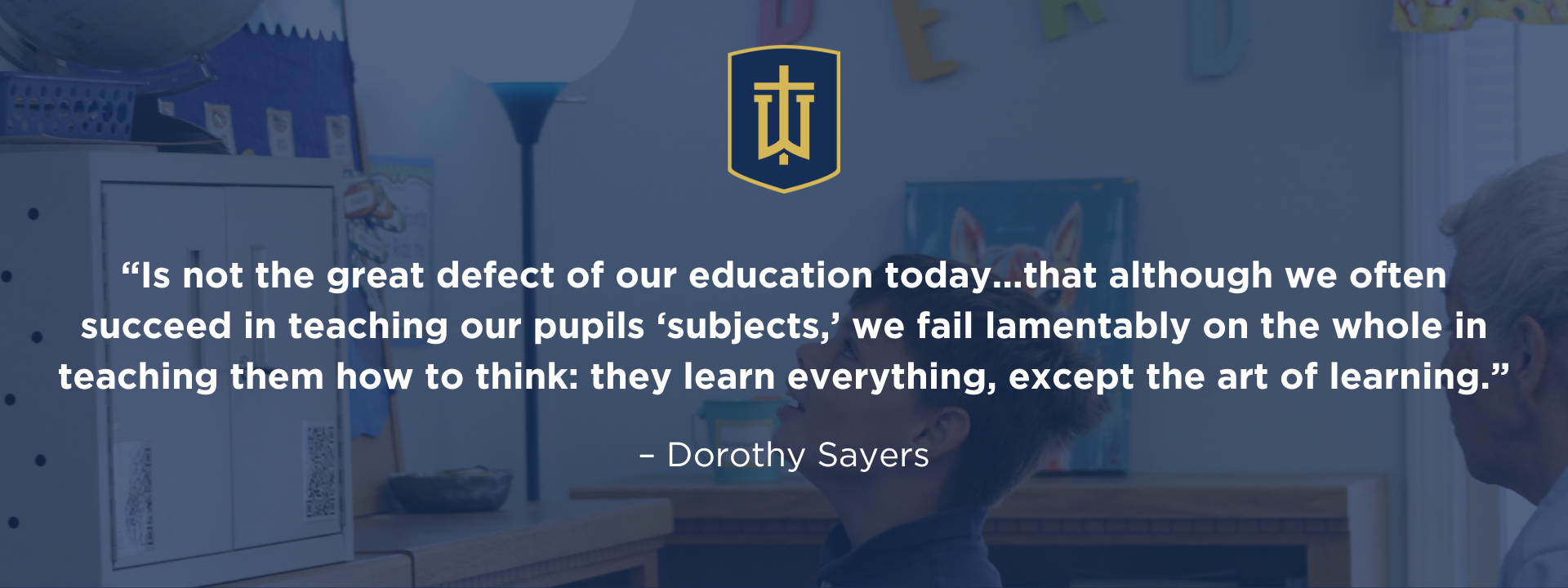Overview of Classical Education
To imagine what Classical Education looks like, picture students who are engaged, smiling, asking questions, embracing rigorous academics, mastering concepts and not just the bare facts, discussing topics eloquently and winsomely while being encouraged to think bigger. As you picture this, allow the sweet laughter of children to play softly in the background or listen to their joyful rhythmic clapping and chanting of catchy jingles to memorize poetry and scripture. This is just a snapshot of Classical Education in action.
In simple terms, Classical Education, the model upon which Westminster bases its classroom structure and teaching methods, teaches the art of learning – more than just what to think, but how to think.
In more detailed terms, Classical Education is learning built upon the great works of Western civilization taught through a process called the Trivium. The three phases of the Trivium are grammar, logic, and rhetoric. Together, these phases provide the building blocks necessary for developing a lifelong learner.
Students first learn the basic facts, then reasoning skills, and finish by artfully presenting their understanding. Classical education creates a cohesive Christian worldview by connecting all disciplines through consistent thinking. Students learn the art of learning and are thereby prepared for whatever calling God gives them.


